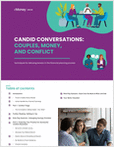For more than two years, markets have priced in a lot less monetary tightening than was signaled by the Federal Reserve’s “blue dots,” which represent the expectations of individual members of the Open Market Committee for the future path of interest rates.
The surprise election of Donald Trump is likely to affect this divergence for two distinct reasons, and the market implications are different depending on which of the two dominates in the months ahead.
An interesting picture emerges from comparing the median of the Fed’s blue dots with what’s implied by the pricing of forward interest-rate contracts. After tracking each other rather closely, a noticeable gap began to appear in the first quarter of 2014. It widened and persisted, even though both lines have trended lower with quite a few bumps along the way.
Though a definitive analysis has yet to explain why the Fed has consistently signaled higher interest rates, several reasons have been suggested. These include excessive economic optimism at the central bank — which has also led to repeated downward revisions in growth projections — as well as differing sensitivities among Fed officials and market participants to spillovers from international developments and changes in the value of the dollar. And because the markets’ view has been validated by outcomes, some have even suggested that traders were leading Fed policies rather than the other way around.
Judging from the initial market reaction to the presidential election, the robustness of this rather consistent gap between official and market projections of interest rates, could well be tested in the months ahead — for two reasons.
First, traders have quickly embraced a reflationary economic scenario based on the content of Trump’s immediate post-election remarks, and in particular the pro-growth elements of his economic approach (including infrastructure spending, corporate tax reform and deregulation), as well as his lack of emphasis on the protectionist measures featured in his campaign that would expose the economy to stagflationary pressures in the short-run (such as tariffs on China and Mexico, and the dismantling of the North American Free Trade Agreement).








 November 14, 2016 at 03:39 AM
November 14, 2016 at 03:39 AM










